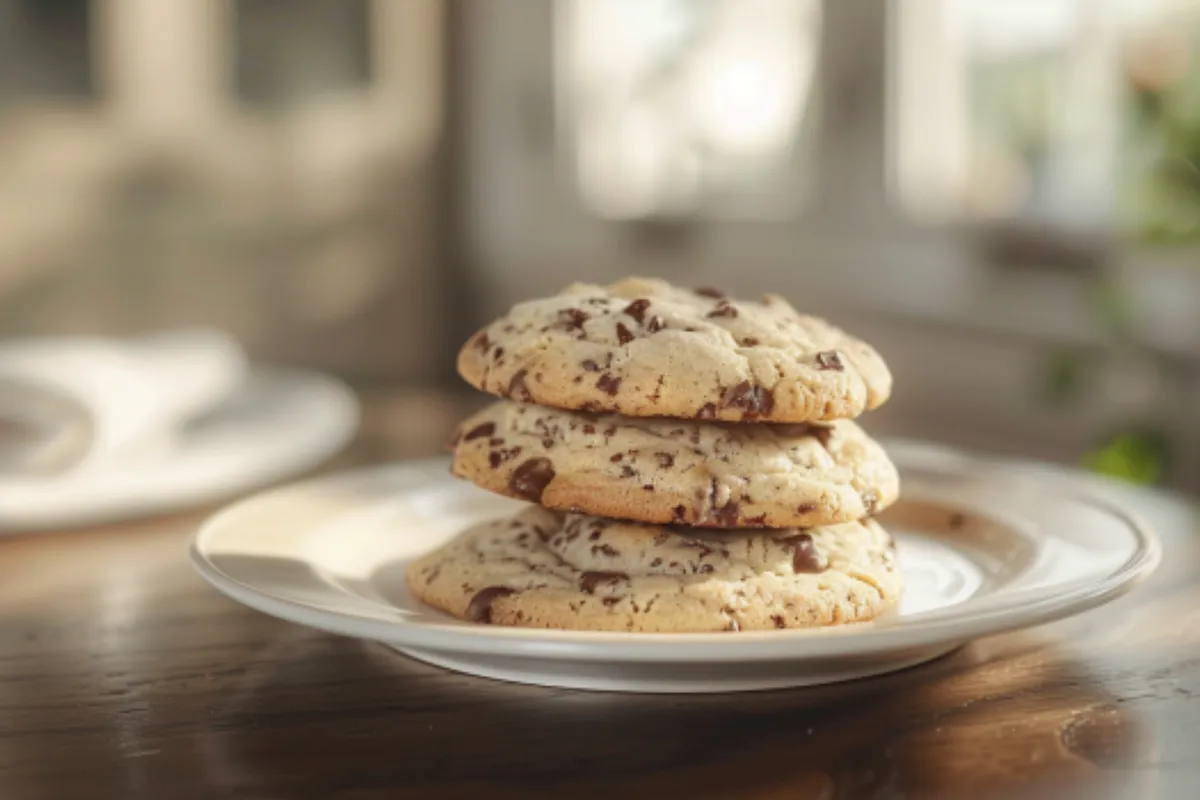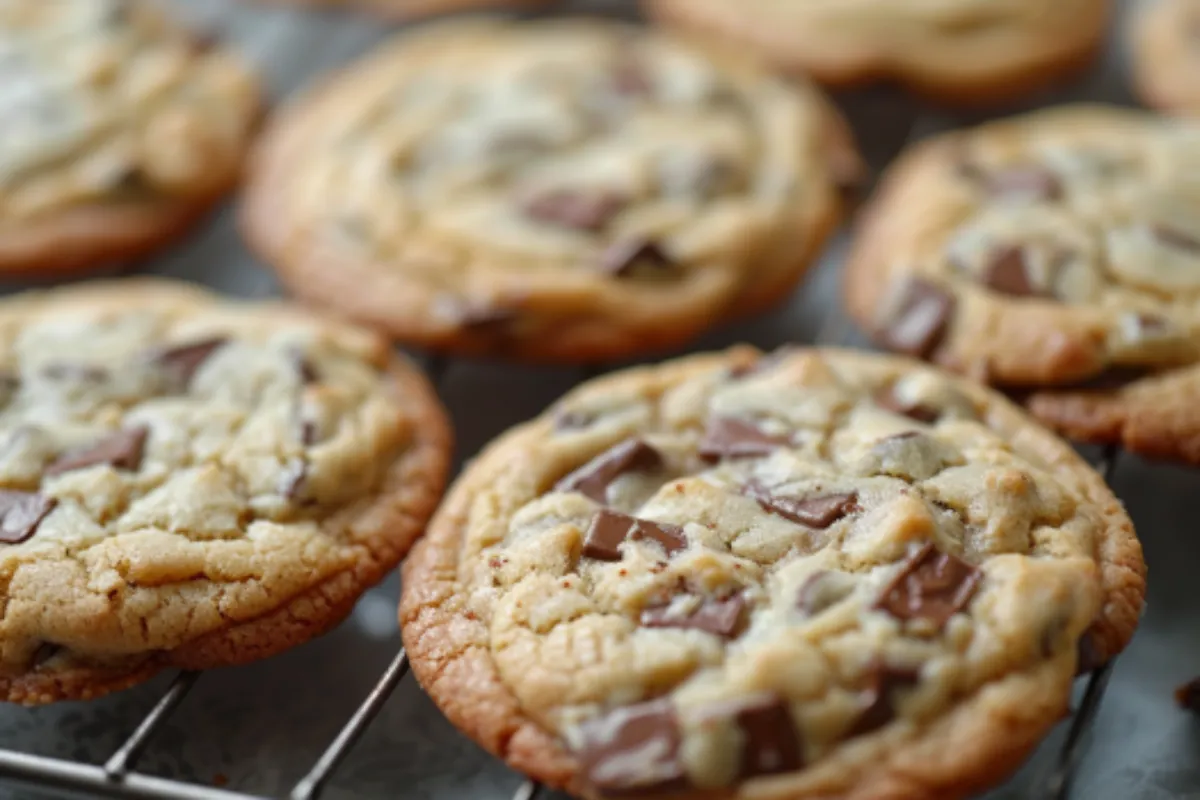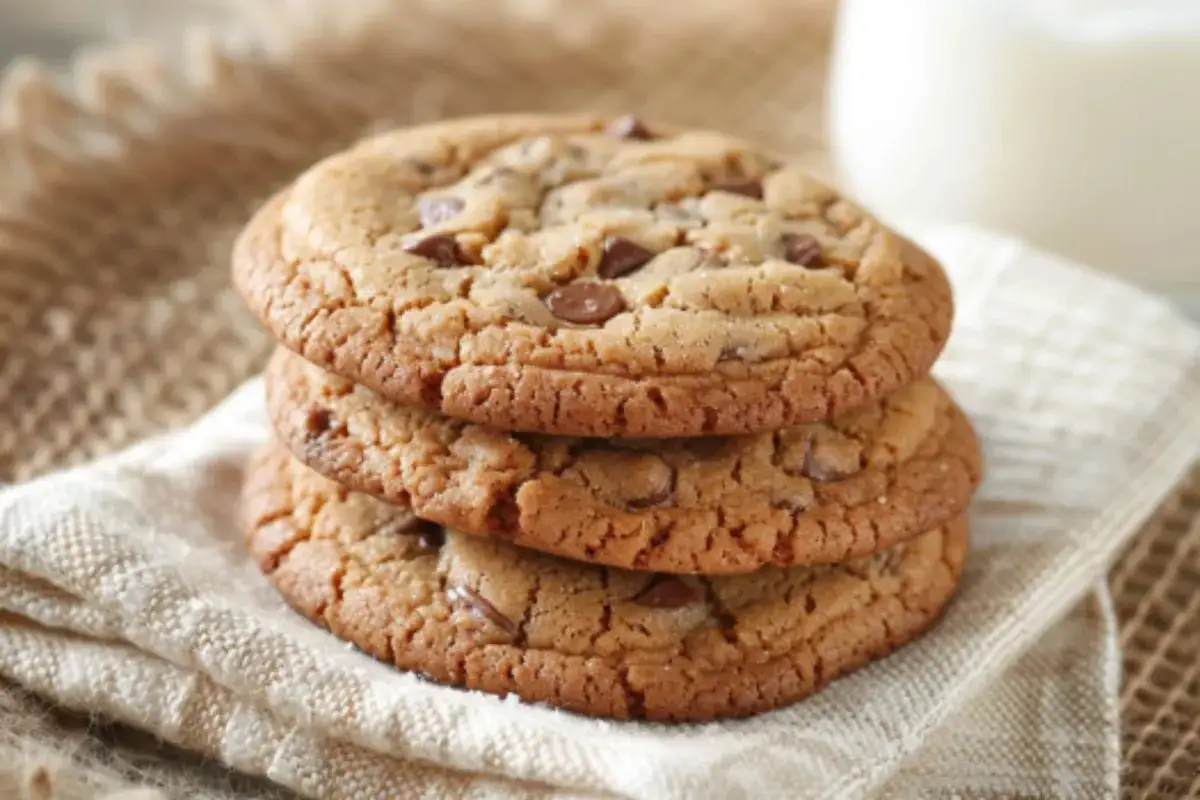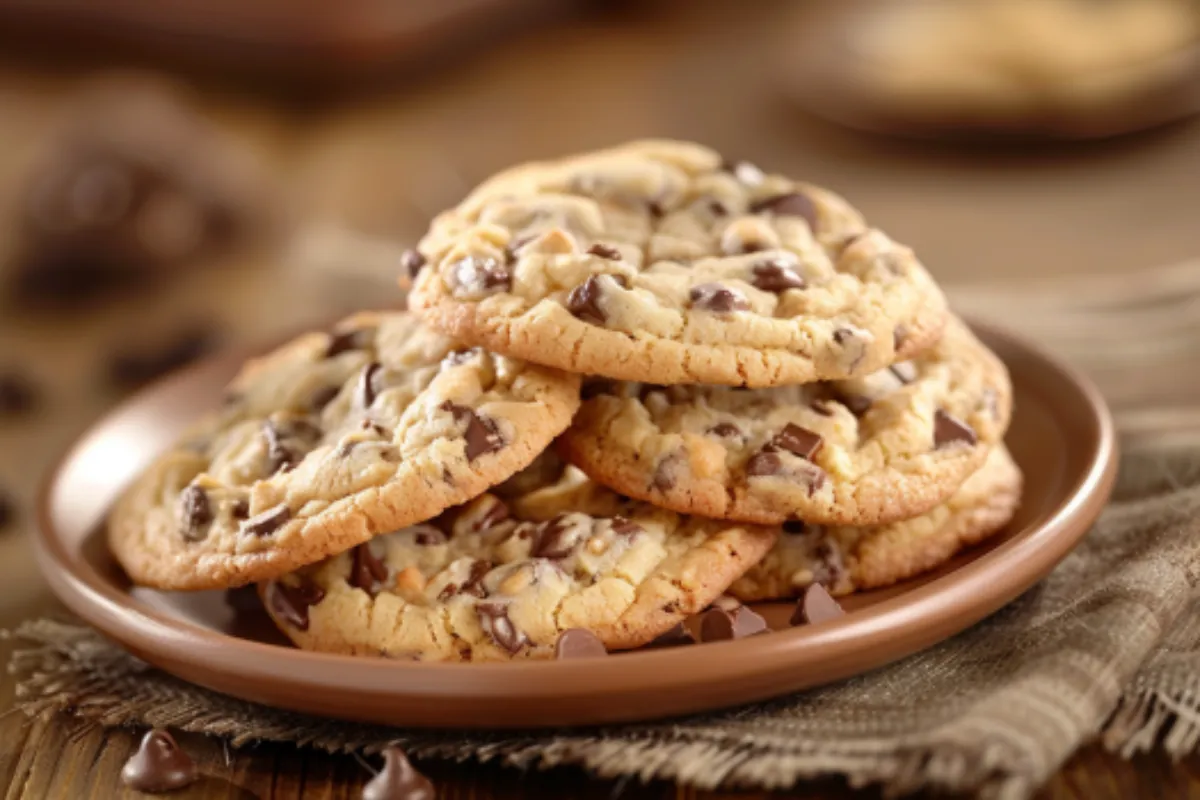The Nestlé Toll House cookie recipe is a baking classic that has stood the test of time for decades. Known for producing the perfect balance of chewy centers and crispy edges, these cookies have become a go-to dessert for people of all ages. Originally created in 1938 by Ruth Wakefield, the cookies were born from a happy accident that led to one of the most iconic recipes in American culinary history. Whether you’re a novice baker or a seasoned pro, mastering the Nestlé Toll House cookies recipe ensures you’ll always have a delicious treat on hand for any occasion. In this guide, we’ll explore the recipe in-depth, cover helpful tips, and offer variations to suit every preference. From the origins of the cookie to practical baking techniques, you’ll discover everything you need to bake the perfect batch of Nestlé Toll House cookies every time.
Whether you’re a first-time baker or a seasoned cookie enthusiast, this guide will help you master the Nestlé Toll House cookie and explore endless variations.
History of the Nestlé Toll House Cookie Recipe
Few people know that the Nestlé Toll House cookies has a storied history rooted in an accidental invention. In 1938, Ruth Wakefield was running the Toll House Inn in Whitman, Massachusetts, where she would bake treats for the guests. One day, while preparing cookies, she decided to experiment by adding chopped-up pieces of a Nestlé semi-sweet chocolate bar into her cookie dough, expecting the chocolate to melt. Instead, the chocolate held its shape, resulting in the creation of chocolate chip cookies.
The new cookie recipe became an instant hit, and as the popularity of the cookies grew, so did demand for Nestlé’s semi-sweet chocolate. Realizing the marketing potential, Ruth struck a deal with Nestlé. In exchange for a lifetime supply of chocolate, the company was allowed to print the recipe on its packaging. Soon after, Nestlé Toll House cookies became a national phenomenon, and the recipe became a staple in American kitchens.
To learn more about how the chocolate chip cookie rose to fame, check out this history of chocolate chip cookies.
Why the Nestlé Toll House Cookie Recipe is So Popular

The Nestlé Toll House cookie recipe is popular for several reasons:
- Simplicity: The recipe uses basic ingredients that are likely already in your pantry.
- Versatility: It can be easily modified to suit personal preferences, such as adding nuts or different types of chocolate.
- Consistency: The cookies turn out perfectly every time if the instructions are followed carefully.
- Balance of Texture and Flavor: The combination of crispy edges and chewy centers, with gooey chocolate chips, creates an irresistible treat.
Beyond its great taste, the Nestlé Toll House cookies recipe has become a symbol of comfort and nostalgia for generations of bakers.
Key Ingredients for the Classic Recipe
The success of the Nestlé Toll House cookie recipe hinges on the proper use of its simple yet powerful ingredients. Each ingredient plays a specific role in the recipe, contributing to the final texture and flavor of the cookie.
- All-Purpose Flour: Flour provides structure to the cookie. All-purpose flour is ideal because it balances the right amount of gluten formation without making the cookies tough. It’s important to measure flour accurately by spooning it into your measuring cup and leveling it off with a knife. Overpacking the flour can result in dry or dense cookies. Make sure to measure flour correctly to avoid dry or dense cookies.
- Butter: Butter is the cornerstone of any great cookie recipe. In the Nestlé Toll House cookies recipe, unsalted butter is preferred because it allows for better control over the salt content. Butter adds richness and flavor while also contributing to the cookie’s texture. Softened butter works best for creaming with sugar, as it creates air pockets that lead to a lighter, fluffier dough. Melted butter, on the other hand, leads to denser, chewier cookies.
- Sugar (Brown and White): The recipe calls for both granulated white sugar and brown sugar. Each plays a crucial role in the final cookie. White sugar helps create crispy edges, while brown sugar, which contains molasses, adds moisture and chewiness. Brown sugar also contributes to the rich, caramel-like flavor of the cookie. Using more brown sugar than white sugar makes for a chewier cookie, while increasing the white sugar ratio leads to a crisper texture.
- Eggs: Eggs bind the ingredients together and add moisture to the dough. The Nestlé Toll House cookie recipe calls for two large eggs, which provide the necessary structure for the cookie. Beating the eggs into the dough one at a time ensures even incorporation. Eggs also help with leavening, giving the cookies a slight rise and fluffy texture.
- Vanilla Extract: Vanilla is the unsung hero of this recipe. It adds warmth and depth to the flavor, complementing the sweetness and balancing the chocolate. Make sure to use pure vanilla extract for the best results, as artificial vanilla can give off a synthetic aftertaste.
- Baking Soda: This leavening agent is crucial for helping the cookies rise and spread properly. Baking soda reacts with the acidic ingredients in the dough, such as brown sugar, to create air bubbles. These bubbles expand during baking, causing the cookies to rise and giving them their chewy texture.
- Chocolate Chips: The signature ingredient in the Nestlé Toll House cookie recipe is, of course, the semi-sweet chocolate chips. The slightly bitter, rich flavor of semi-sweet chocolate contrasts beautifully with the sweet dough. Nestlé’s semi-sweet morsels are the classic choice, but feel free to experiment with dark chocolate, milk chocolate, or even white chocolate for a different flavor profile.
For more baking ingredient inspiration, check out these rotisserie chicken recipes for savory dishes that complement your dessert-making adventures.
Step-by-Step Recipe Guide

Now that you know the key ingredients, it’s time to get into the nitty-gritty of how to make the perfect Nestlé Toll House cookies. Here is the step-by-step process to follow:
- Preheat Your Oven: Preheat the oven to 375°F (190°C). Preheating ensures that the cookies will bake evenly and at the correct temperature from the moment they go in. It’s also important to note that an oven thermometer can help ensure your oven is heating accurately.
- Prepare Your Baking Sheet: Line your baking sheet with parchment paper. This helps prevent the cookies from sticking to the sheet and also makes for easier cleanup. If you don’t have parchment paper, you can use a silicone baking mat.
- Mix Dry Ingredients: In a medium bowl, combine 2 ¼ cups of all-purpose flour, 1 teaspoon of baking soda, and 1 teaspoon of salt. Stir the ingredients together to ensure the baking soda and salt are evenly distributed throughout the flour. Set aside.
- Cream Butter and Sugars: In a large bowl, beat together 1 cup (2 sticks) of softened unsalted butter, ¾ cup of granulated white sugar, and ¾ cup of packed brown sugar. Creaming the butter and sugar means to mix them together until they’re light and fluffy. This step is crucial, as it creates air pockets in the dough that result in a lighter, chewier cookie.
- Tip: Use an electric mixer for this step if possible, as it makes it easier to achieve the proper consistency.
- Add Eggs and Vanilla: Once the butter and sugar mixture is light and fluffy, beat in 2 large eggs one at a time. This ensures that each egg is fully incorporated before adding the next. Then add 1 teaspoon of vanilla extract and mix until combined.
- Combine Wet and Dry Ingredients: Gradually add the dry ingredients into the wet mixture, stirring until just combined. Be careful not to overmix the dough, as this can lead to tough cookies.
- Stir in Chocolate Chips: Using a spatula or wooden spoon, gently fold in 2 cups of semi-sweet chocolate chips. If you’d like, you can also add 1 cup of chopped nuts, such as walnuts or pecans, for added texture and flavor.
- Shape and Bake: Drop rounded tablespoons of dough onto the prepared baking sheet, leaving about 2 inches of space between each cookie. This allows them to spread during baking. Bake the cookies in the preheated oven for 9-11 minutes, or until the edges are golden brown and the centers are still soft.
- Cool the Cookies: Once the cookies are done baking, remove them from the oven and let them cool on the baking sheet for 2 minutes before transferring them to a wire rack to cool completely. This step allows the cookies to set without overbaking them.
Achieving the Perfect Texture: Tips and Tricks
One of the reasons the Nestlé Toll House cookie recipe has stood the test of time is its perfect balance of textures—crisp edges and chewy centers. To ensure your cookies come out just right every time, here are some tips and tricks:
- The Importance of Room Temperature Ingredients: Ensure that the butter and eggs are at room temperature before starting. Room temperature butter creams better with the sugar, creating a light and fluffy texture that is essential for the perfect cookie. Cold butter will not incorporate as well, leading to denser dough.
- Chill the Dough: For thicker, chewier cookies, refrigerate the dough for at least 30 minutes before baking. Chilling the dough solidifies the butter, preventing the cookies from spreading too much in the oven. This results in cookies that are thicker and chewier.
- Avoid Overmixing: Once you add the dry ingredients to the wet mixture, be careful not to overmix the dough. Overmixing can lead to gluten formation, which makes the cookies tough and chewy in the wrong way. Mix just until the flour is incorporated.
- Monitor Baking Time Closely: Every oven bakes differently, so keep a close eye on your cookies as they bake. For soft, chewy cookies, pull them out of the oven when the edges are set but the centers still look slightly underbaked. The residual heat from the baking sheet will continue to cook the centers as they cool.
- Use a Cookie Scoop for Uniform Size: Using a cookie scoop ensures that all your cookies are the same size, which leads to more even baking. Uniform cookies also look more professional and are easier to serve.
- Experiment with Different Chocolate Types: While the classic recipe calls for semi-sweet chocolate chips, don’t hesitate to experiment with different types of chocolate. Try using dark chocolate for a richer flavor or milk chocolate for a sweeter cookie. You can even mix and match different types of chocolate for a complex flavor profile.
Common Mistakes and How to Avoid Them

No matter how experienced a baker you are, there are always common mistakes that can occur when making cookies. Here’s how to avoid the most frequent issues:
- Flat Cookies: If your cookies are spreading too much and coming out flat, the butter might be too soft. Chilling the dough before baking can prevent excessive spreading. Another culprit could be too little flour. Make sure you are measuring your flour correctly by spooning it into the measuring cup and leveling it off.
- Dry Cookies: Dry cookies are often the result of overbaking. Pull your cookies out of the oven when the edges are golden but the centers are still soft. They will continue to bake on the sheet as they cool.
- Tough Cookies: Tough cookies can occur if you overmix the dough after adding the flour. Be gentle when mixing the dough, and stop as soon as the flour is fully incorporated.
- Undercooked Centers: If the edges of your cookies are done but the centers are undercooked, your oven temperature might be too high. Try reducing the oven temperature by 25°F and baking the cookies a little longer.
- Burnt Bottoms: Burnt cookie bottoms are often a result of baking on dark-colored pans. Dark pans absorb more heat and can cause the bottoms of the cookies to burn. Use light-colored, non-stick pans or line your baking sheets with parchment paper to prevent burning.
Variations and Add-Ins
The beauty of the Nestlé Toll House cookie recipe lies in its versatility. While the classic chocolate chip version is always a winner, there are plenty of ways to get creative with the recipe. Here are some variations and add-ins to try:
- Different Chocolate Types: Experiment with different types of chocolate beyond the traditional semi-sweet chips. Try dark chocolate, milk chocolate, or even white chocolate chips. For a more sophisticated twist, use chopped chocolate bars instead of chips for larger pockets of melted chocolate.
- Nuts: Adding nuts to your cookies adds texture and flavor. Chopped walnuts or pecans are classic choices, but you can also try macadamia nuts or hazelnuts. Toast the nuts before adding them to the dough for extra flavor.
- Dried Fruit: For a sweet, chewy addition, mix in dried fruit such as raisins, dried cranberries, or chopped dried apricots. The tanginess of dried fruit pairs well with the sweetness of the cookies.
- Spices: Add a pinch of cinnamon or nutmeg to the dough for a warm, spiced flavor. This variation works especially well during the holiday season.
- Coconut: Shredded coconut adds a tropical twist to the cookies and pairs wonderfully with both chocolate and nuts.
- Double Chocolate: For chocolate lovers, try a double chocolate variation by adding cocoa powder to the dough and using both semi-sweet and milk chocolate chips.
Serving Suggestions and Pairings
Now that you’ve mastered the Nestlé Toll House cookie recipe, it’s time to think about how to serve these delicious treats. Here are a few fun ideas:
- With a Glass of Milk: The classic pairing! There’s nothing better than enjoying a warm Nestlé Toll House cookie with a cold glass of milk. The sweetness of the cookie pairs perfectly with the creamy, cooling effect of the milk.
- As Ice Cream Sandwiches: Take your cookies to the next level by turning them into ice cream sandwiches. Simply sandwich a scoop of your favorite ice cream between two cookies for a decadent treat.
- Dipped in Chocolate: For an extra indulgent touch, dip half of each cookie in melted chocolate and let it harden before serving. You can also sprinkle the dipped cookies with crushed nuts or sprinkles for added texture.
- With Coffee or Tea: For a more sophisticated pairing, serve your cookies with a cup of coffee or tea. The slight bitterness of coffee or tea cuts through the sweetness of the cookies, creating a balanced treat.
- Holiday Cookie Platter: Make a batch of Nestlé Toll House cookies as part of a holiday cookie platter. Pair them with sugar cookies, gingerbread, and other holiday favorites for a festive dessert spread.
Storage Tips
After you’ve baked your Nestlé Toll House cookies, proper storage is key to keeping them fresh and delicious. Here are some tips for storing your cookies:
- Room Temperature: Store the cookies in an airtight container at room temperature for up to one week. To keep them soft, add a slice of bread to the container. The cookies will absorb the moisture from the bread, preventing them from drying out.
- Freezing Baked Cookies: If you want to store the cookies for longer, you can freeze them. Place the baked cookies in a single layer on a baking sheet and freeze until solid. Once frozen, transfer the cookies to a freezer-safe bag or container. They will keep for up to 3 months. When ready to enjoy, simply thaw the cookies at room temperature.
- Freezing Cookie Dough: For the ultimate convenience, freeze the cookie dough instead of the baked cookies. Scoop the dough into individual balls and freeze on a baking sheet. Once solid, transfer the dough balls to a freezer-safe bag. When you’re ready to bake, simply place the frozen dough balls on a baking sheet and bake as directed, adding a few extra minutes to the baking time.
Frequently Asked Questions
- What makes the Nestlé Toll House cookie recipe unique?
- The combination of semi-sweet chocolate chips and the perfect balance of sugar and butter makes this recipe stand out from others.
- Can I freeze the cookie dough?
- Yes! The dough can be frozen for up to 3 months. Just scoop it onto a baking sheet, freeze, and then transfer to an airtight container. You can bake the dough straight from the freezer—just add a couple of extra minutes to the baking time.
- Why are my cookies coming out flat?
- Flat cookies can result from overly soft butter or not enough flour. Chilling the dough before baking helps prevent this issue.
- Can I substitute other types of chocolate chips?
- Absolutely! While semi-sweet chips are traditional, you can use milk chocolate, dark chocolate, or even white chocolate chips for different flavor profiles.
- Can I make a gluten-free version of this recipe?
- Yes, you can substitute the all-purpose flour with a gluten-free flour blend. Make sure to use gluten-free chocolate chips as well.
Conclusion
The Nestlé Toll House cookie recipe is more than just a recipe it’s a timeless tradition that has been passed down through generations. With the perfect balance of crispy edges, chewy centers, and gooey chocolate chips, it’s no wonder these cookies are beloved by so many.
Whether you stick to the classic recipe or experiment with different add-ins and variations, the Nestlé Toll House cookie is a versatile and foolproof recipe that is sure to satisfy any sweet tooth. So grab your mixing bowl, preheat your oven, and get ready to bake a batch of cookies that will leave everyone asking for seconds.
For even more baking ideas and inspiration, be sure to check out other recipes like this Christmas crack recipe for a holiday treat or these creative birria tacos if you want to try something savory!

